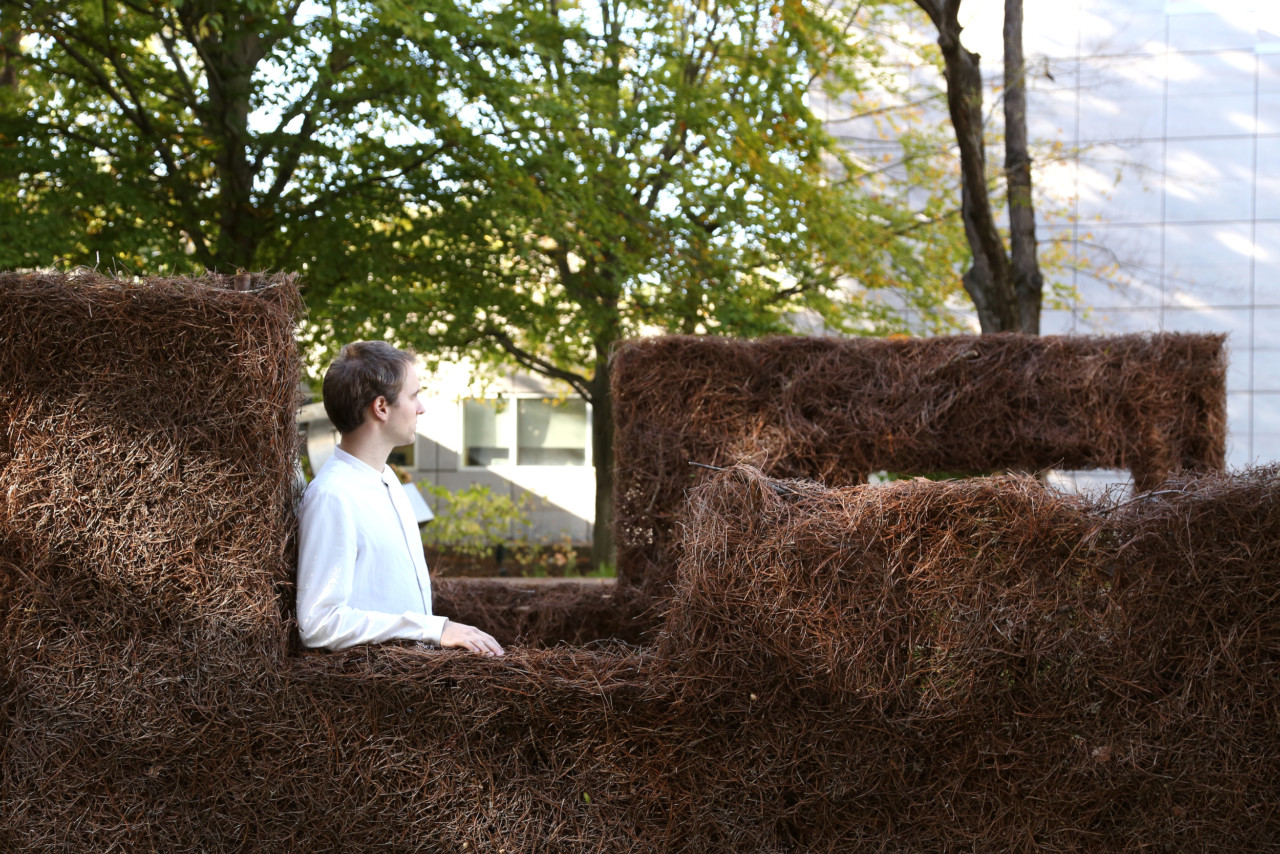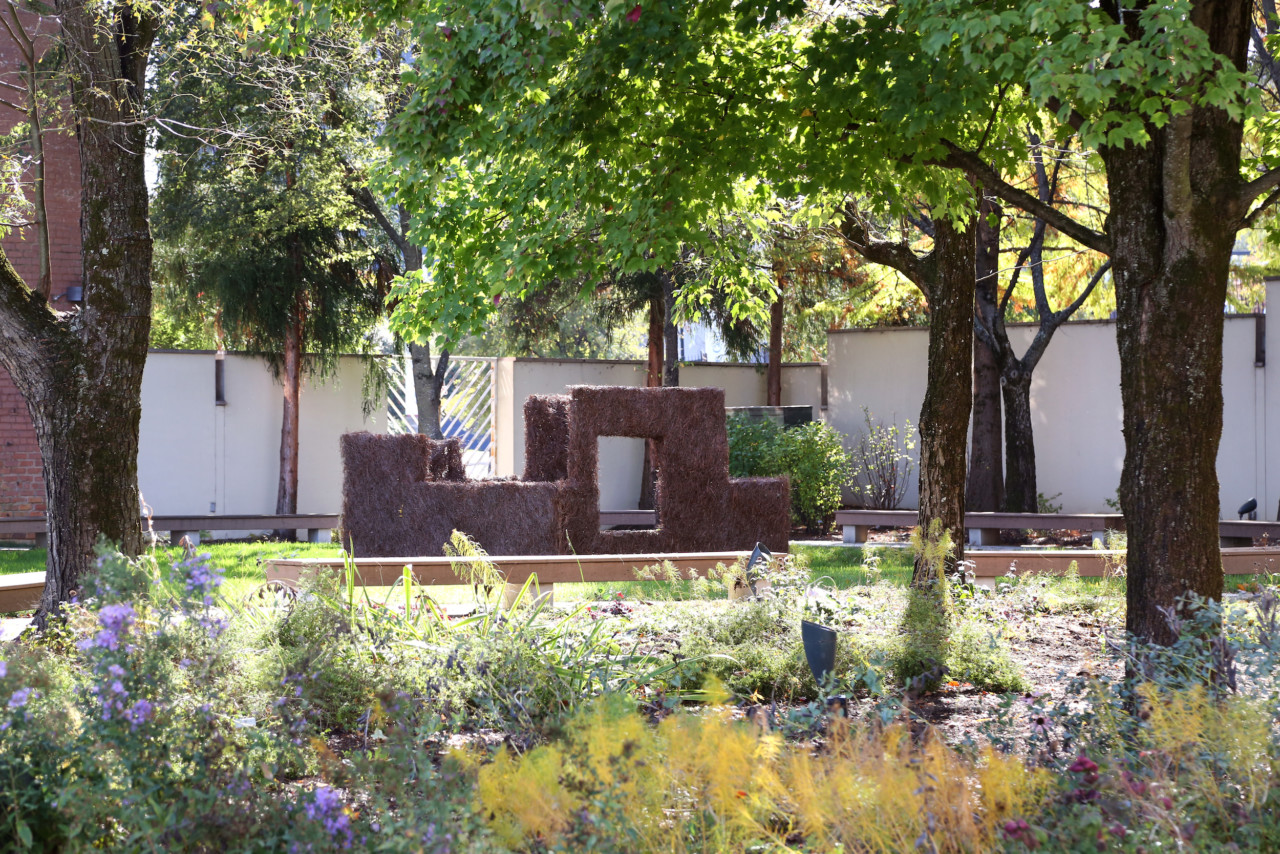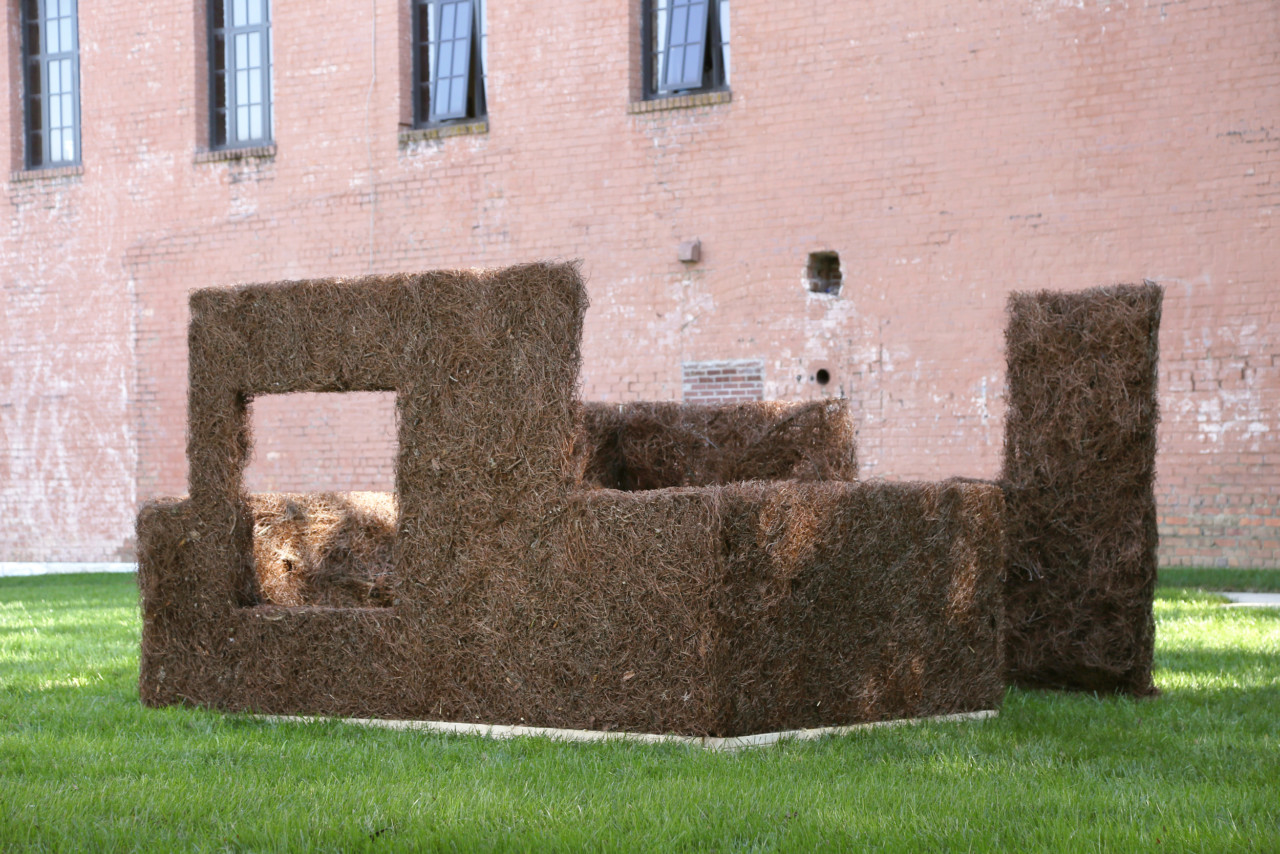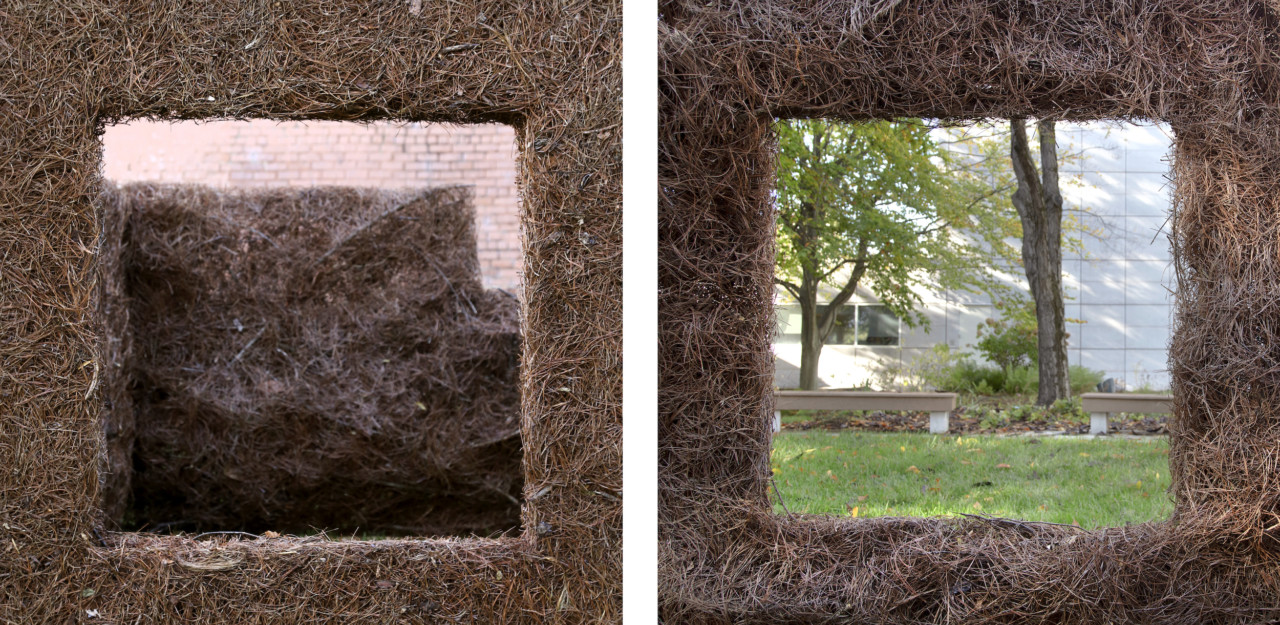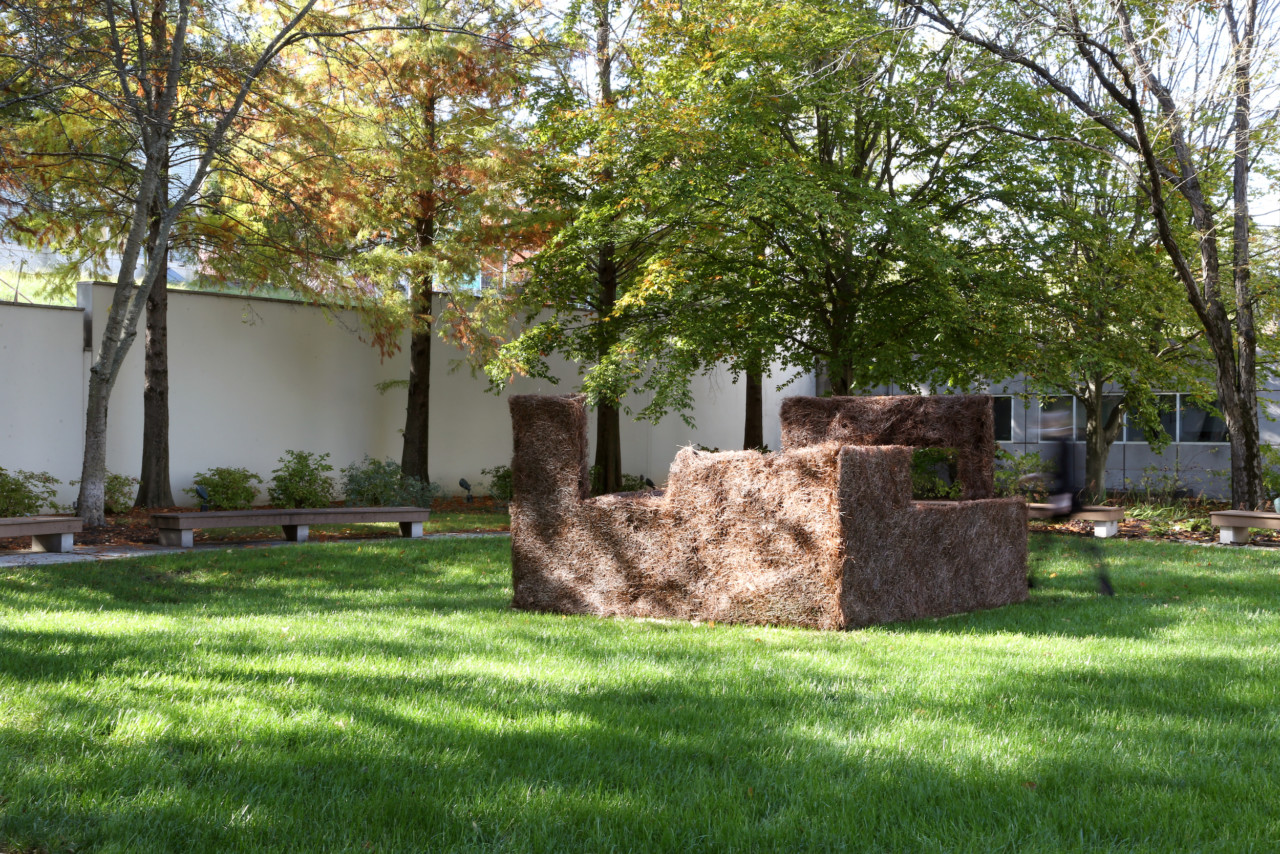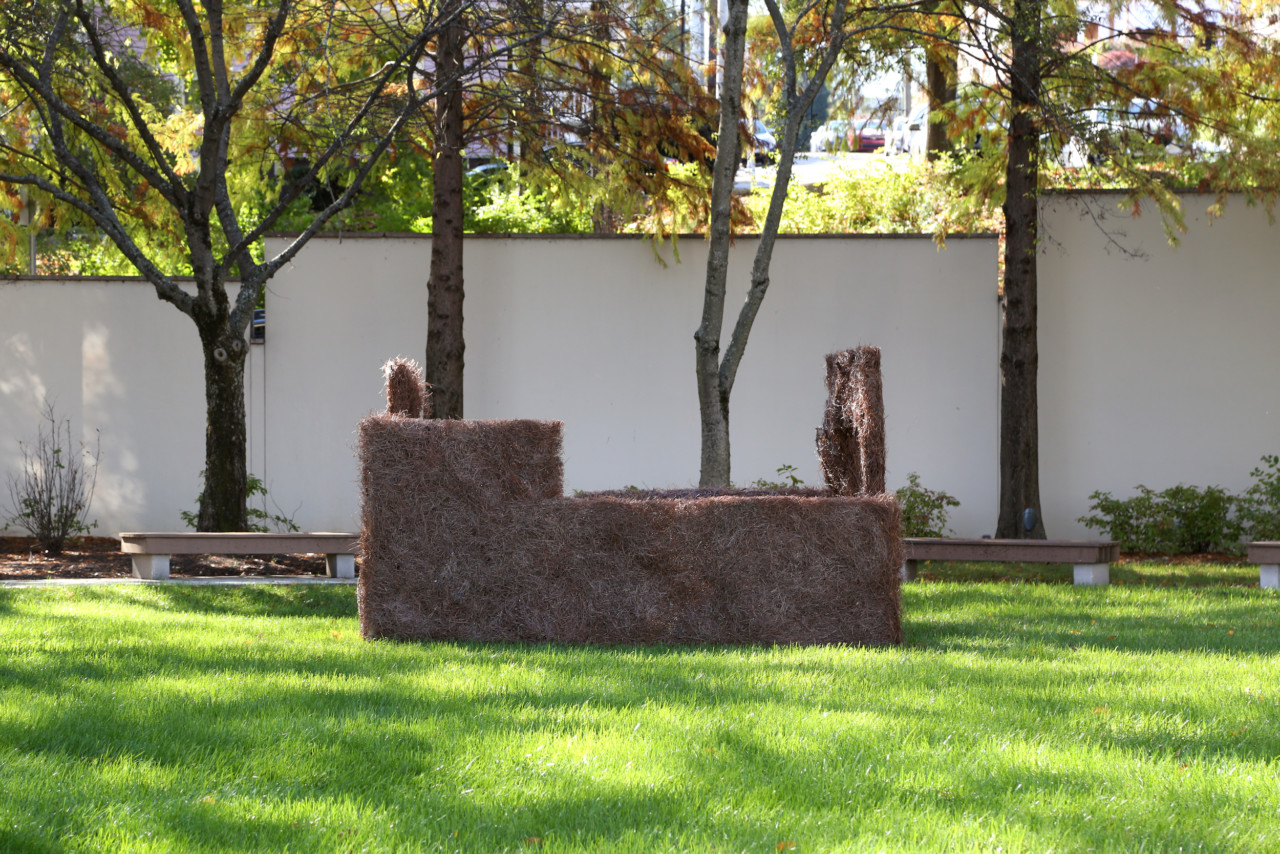Katie MacDonald and Kyle Schumann of the Charlottesville, Virginia-based design practice After Architecture have shared their latest work, a multitasking inhabitable installation made from organic waste now on view in the South Garden of the Knoxville Museum of Art in Tennessee through November 29.
Homegrown, the aforementioned temporary biomimetic shelter, takes the form of a freestanding 10-foot-by-10-foot room (roughly the same size as a standard domestic space, according to MacDonald and Schumann), lacks any sort of roof structure, and features cut-outs where doors and windows might be. Not quite a work of architecture and not quite a sculpture, though it can be viewed as both, the room-ish form of Homegrown is also evocative of ruins or a topiary hedge per the designers.
Proposing “an alternative material ethic” to standardized, two-by-four-based building products and processes that leave large amounts of waste in their wake, Homegrown’s “walls” are lightweight biocomposite panels are made of landscaping waste that includes both native and invasive-to-Tennessee plant and tree species (kudzu and bamboo in the latter camp) as well as forestry waste. The fibrous waste materials collected by MacDonald and Schumann were then formed into the panels using a bio-based binding agent and a unique pneumatic forming system developed by After Architecture.
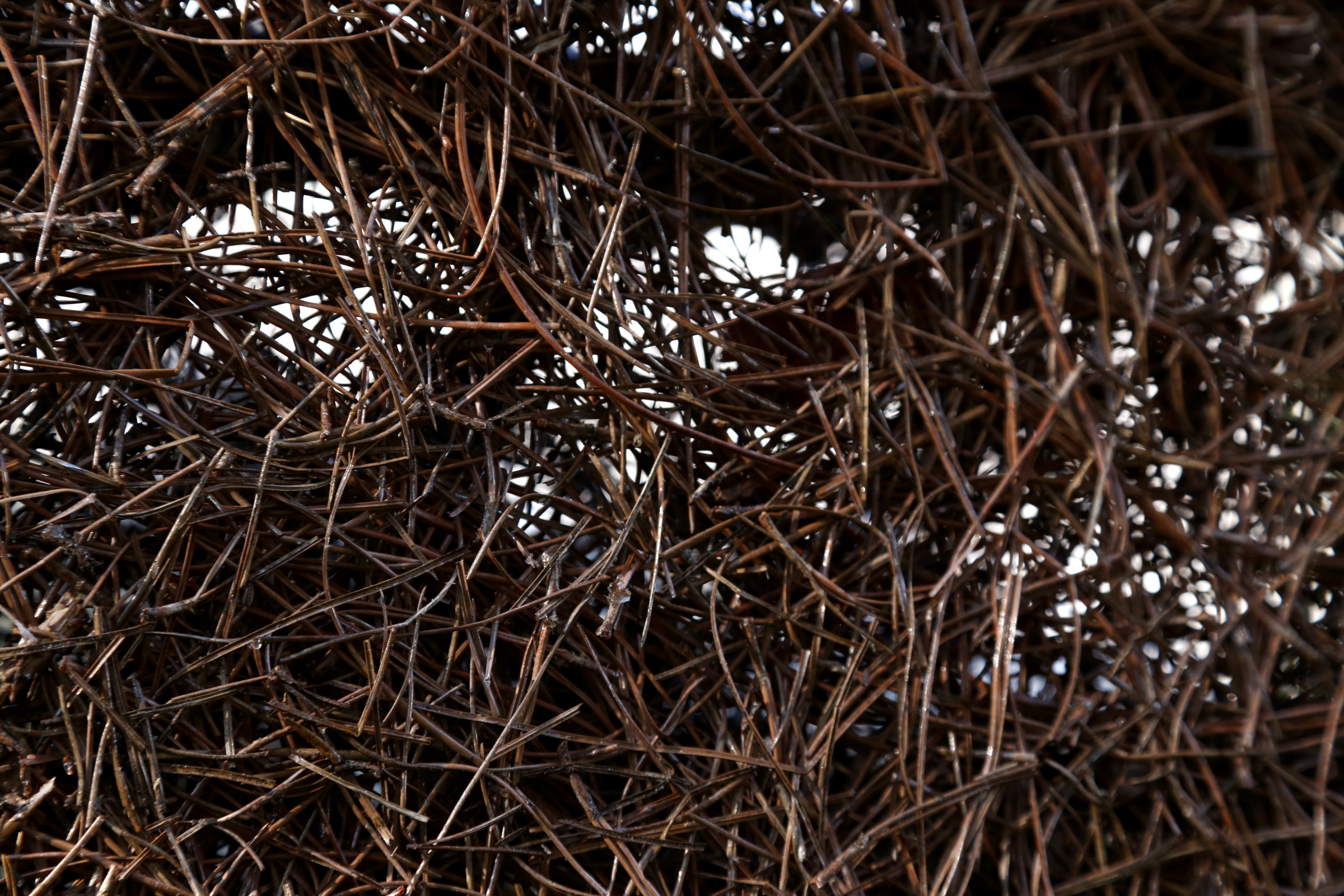
“The development of a reusable, inflatable mold was driven by environmental concern and the desire to transition away from traditional subtractive methods for producing irregular molds, which are often cut from large disposable foam blocks,” elaborated MacDonald and Schumann in a press release. “Using a hybrid workflow, wall designs were modeled digitally and then constructed physically using the novel pneumatic mold.”
Referring to this fabrication system as “pillow forming,” Schumann goes on to explain that this novel approach “allows for the design and construction of an infinite number of forms through a malleable process—the injection and removal of air—which can be repeated again and again. Traditional digital fabrication of molds often relies on subtractive processes like CNC milling and robotic foam cutting, with each mold producing only a single unique geometry,” he added. “Our system preferences variable form over repetitious form.”
“Alternately thin and dense or thick and porous,” the resulting panels, faced in pine needles and situated atop a lumber base, permit light to filter through. As detailed by MacDonald and Schumann, Homegrown is meant to prompt a “questioning of how our buildings are made, the materials with which they are made, and the new potentials that might be unveiled if these established systems and expectations can be revised.”
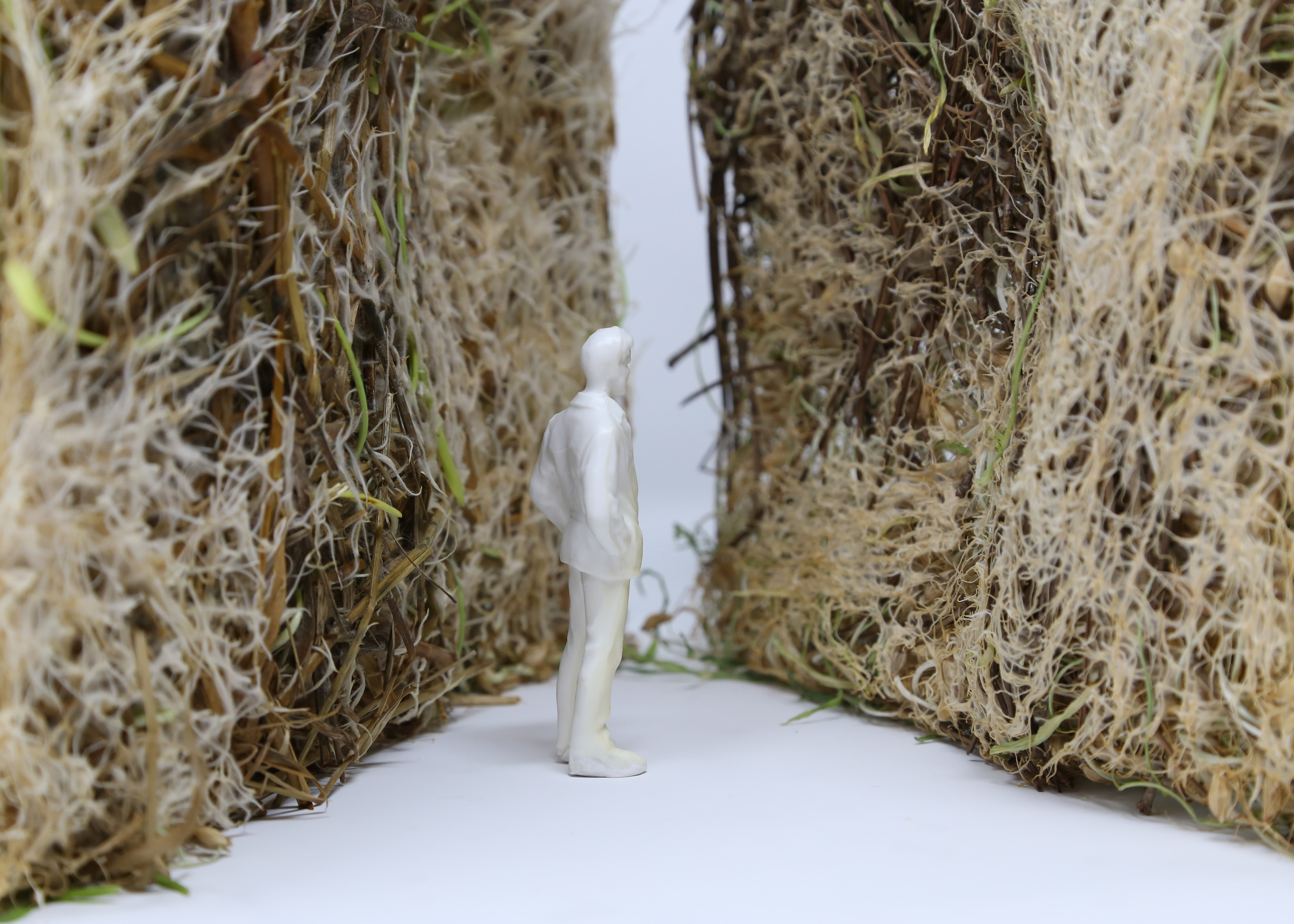
“The resulting construction is not flat and hard, but fuzzy, fluffy, furry, shaggy,” added MacDonald. “Created using novel technology but physically composed of plant fibers, the installation is simultaneously primitive and high-tech.”
As mentioned, Homegrown will be on view through November 29 at the Knoxville Museum of Art, a nearly 60-year-old institution that has been in its current home, a pink Tennessee marble-clad structure designed by Edward Larrabee Barnes, since 1990. Museum admission is free but advance reservations are required during the COVID-19 pandemic. The installation and the research that went into its design and fabrication is the culmination of the 2019-2020 Tennessee Architecture Fellowship at the University of Tennessee Knoxville, which was jointly held by MacDonald and Schumann.
As part of the fellowship, MacDonald and Schumann led a studio at the UTK College of Architecture + Design titled “Material Misbehavior.” During the run of the studio, students were encouraged to explore and experiment with unorthodox building materials, namely the myriad invasive plants found across the Volunteer State. Normally a thankless, grueling, and expensive task, the studio reimagined the process of removing invasive species for architectural applications as being one having economic value that also enables natural ecosystems to thrive as they did before the arrival of fast-growing interlopers.






